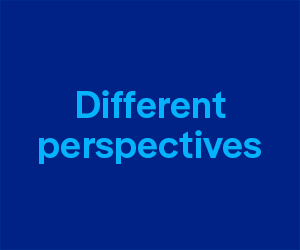
By Konrad von Finckenstein and James Mitchell
THE PRINCIPAL AIM of Bill C-10, an Act to amend the Broadcasting Act, is to bring online broadcasting (i.e., “streaming”) under the aegis of the Act.
Today, online broadcasters – Netflix most prominently – are already highly visible in Canada and currently not subject to any regulation, even as they compete vigorously with Canadian broadcasters and Broadcast Distribution Undertakings (BDUs).
In Canada, broadcasters and BDUs must obtain a licence from the CRTC and comply with a host of regulations regarding content, exhibition, and contribution – all designed to foster the production and distribution of Canadian content. The overall aim is to ensure Canadian broadcasting reflects Canadian values and way of life.
BDUs can also obtain a licence to offer video on demand (VOD) services, subject to conditions that by and large mirror the conditions of broadcasting licences.
Once it became possible to deliver and access video content online, the CRTC took the position that this amounted to broadcasting, but the Commission in 1999 exempted all such online content, on the grounds that “… it will not contribute in a material manner to the implementation of the broadcasting policy…” As a result, foreign streamers are not regulated by the CRTC.
To counter the march of streamers into Canadian consumption space, the CRTC enacted in 2015 the Hybrid Video on Demand Exemption (HVOD) order.
The HVOD order picks up many conditions of the VOD order and allows broadcasting undertakings to deliver their content online provided their exclusive content is offered in a manner that is not dependent on subscription to a specific BDU, mobile or retail Internet access service. This was designed to enable Canadian BDUs to compete “on an equal footing in an on-demand environment,” according to the order. Canada’s two streamers – Illico and Crave TV – operate under it today.
This is in effect regulation by exemption order – that is, the undertaking is only exempt if it complies with the terms of the exemption order. HVOD’s are subject to numerous obligations regarding registration and information-sharing with the CRTC and compliance with various broadcast codes.
“There is no need to give the CRTC hegemony over the Internet, encourage and facilitate ministerial interference, and risk a trade confrontation with the U.S. by failing to apply national treatment to all streamers.”
To create a regime whereby streamers (domestic or foreign) contribute to Canadian broadcasting two changes are required:
- First, an amendment to the Broadcasting Act to remove any doubt that access and delivery of video programs online is covered by that Act. Bill C-10 removes that doubt by adding three new definitions for Broadcasting, Broadcasting undertaking, and Online undertaking. These definitions are needed and should be enacted.
- Second, make conforming changes to the HVOD order. It was written to allow BDUs to operate streaming services. It should be altered so that it applies (in so far as relevant) to both online undertakings as well as BDUs. In addition, obligations can be imposed on streamers (foreign and domestic) mirroring those of VOD licence holders such as contributing 5% of gross annual revenues to an existing Canadian program production fund and ensuring a given percentage of English and French Canadian feature films and other programming offered be Canadian.
Unfortunately, instead of such a relatively simple and straightforward fix, we have Bill C-10 which gives the CRTC vast new powers such as requiring websites, regardless of where located, to register with the Commission, which can then demand vast amounts of information returns, levy administrative costs and fees and demand Canadian content fund contributions, along with imposing Canadian content and discoverability obligations.
Further, the bill gives the government new powers of direction over most aspects of CRTC regulation and creates conflicts with the provisions of the Canada-United States-Mexico Trade Agreement, raising the risk of unilateral U.S. retaliatory action.
Why did the government choose to go this way?
If the objective, as publicly stated, was to integrate streamers into the Canadian broadcasting system and to make them contribute their fair share to the production and exhibition of Canadian content, this could be done quite easily by changing the Broadcasting Act and amending the HVOD order. There is no need to give the CRTC hegemony over the Internet, encourage and facilitate ministerial interference, and risk a trade confrontation with the U.S. by failing to apply national treatment to all streamers.
The Internet is an incredible engine driving innovation, growth and efficiencies. To attempt to subject it to regulation for the benefit of Canadian broadcasting makes no sense. One would hope that if Bill C-10 stalls in the Senate, the government will adopt this much simpler and less controversial approach to dealing with the advent of streaming.
Konrad W. von Finckenstein, Q.C., is a senior fellow at the C.D. Howe Institute, and was the chair of the CRTC, a Federal Justice, and Commissioner of Competition. James Mitchell is a former head of the Machinery of Government Secretariat in the Privy Council Office.
This was previously posted in the CD Howe Institute “Intelligence Memos.”




